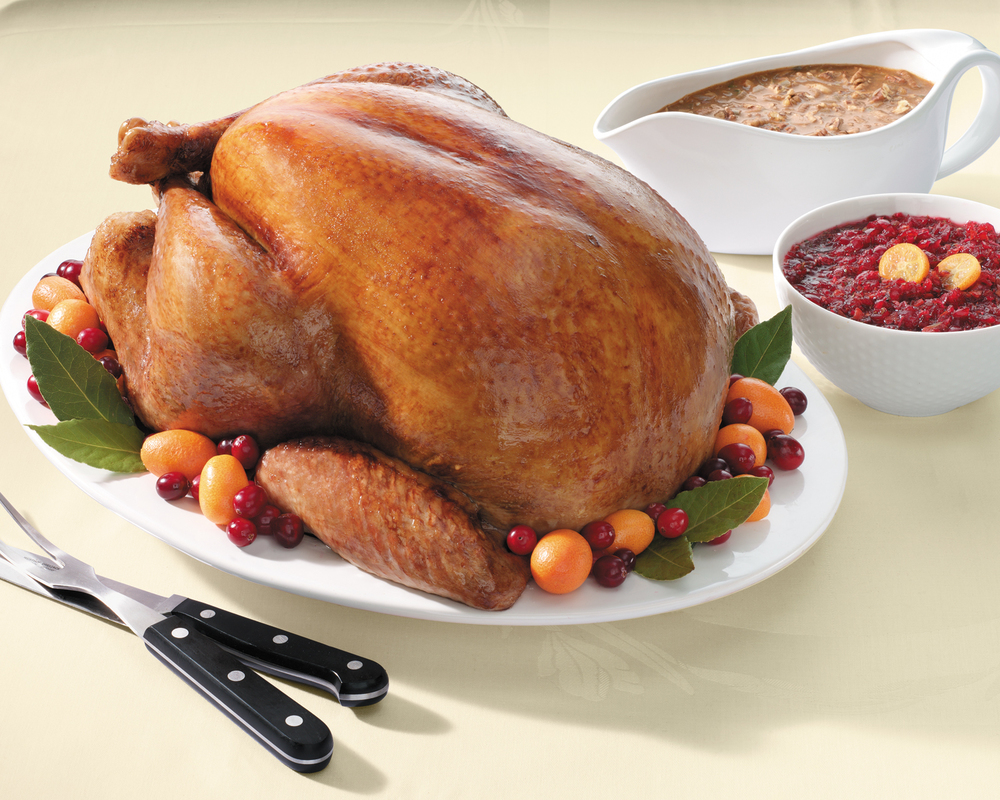Turkey is often regarded as the common Christmas meal but it appeared on the menu only around 1650 after European colonization of North America. It was introduced to Europe by Sebastian Cabot on his return from the New World. The bird got its name after merchants from Turkey made it a popular dish. Prior to this, goose, peacock or boar were associated with the Christmas feast. Seasonal foods vary with geographic locals and traditional family customs.

USA:
The US is a melting pot of cultures, so we have adopted a mix of many foreign traditions at Christmas time. Feasting on goose, turkey, ham, crown roast, a variety of root vegetables, squash, wild rice, and end our meal with a apple pie or pumpkin pie.
Australia:
Christmas is in midsummer and lunch is often a barbecue of prawns, steak and chicken with ice cream or sorbet for desert, maybe cooked at the beach.
Czech Republic:
Traditionally the meal is eaten on Christmas Eve and consists of fish soup, salads, eggs and carp. The number of people at the table must be even or the one without a partner is supposed to be dead by next Christmas. (Incentive? How about rent a partner?)
Finland:
Traditional Christmas dinner will be a casserole of macaroni, rutabaga, carrot and potato, with ham or turkey. A mixed platter of meat and fish is also popular. After the meal it is a tradition to have a sauna and then to visit the graves of relatives. (Odd combination, but OK)
Germany:
Roast Goose is the favored Christmas meal, accompanied by potatoes, cabbage, carrots, parsnip and pickles. The meal is usually eaten on Christmas Eve. Rural southern Germany feast on game like wild boar and venison.
Greenland:
The Christmas feast may include Little Auks, (these are seabirds that are a bit like Penguins), wrapped in sealskin and buried for months until decomposed.
Italy:
Christmas lunch can run to seven courses including antipasto, a small portion of pasta, roast meat, two salads, two sweet puddings followed by cheese, fruit, brandy and chocolates.
Jamaica:
The traditional Christmas dinner is rice, gungo peas, chicken, ox tail and curried goat.
Latvia:
Christmas Dinner is cooked brown peas with bacon sauce, small pies, cabbage and sausage.
Norway:
The Christmas meal is eaten on Christmas Eve and for coastal regions is traditionally cod, haddock and lutefisk. Inland they will dine on pork chops, Christmas meatloaf and special sausages are eaten. Farmers leave a bowl of nisse (gruel) in barns on Christmas Eve for the magic Gnome who protects their farms.
Portugal:
A special Christmas meal is salted dry cod-fish with boiled potatoes eaten at midnight on Christmas Eve.
Russia:
Christmas food includes cakes, pies and meat dumplings. The mythical Babouschka is enjoying a resurgence following the ban under Communism. She brings gifts to Russian children rather than Santa Claus.
South Africa:
Christmas is during the hot summer season but the traditional turkey dinner with all the trimmings is still eaten at Christmas.
Sweden:
A Smorgasbord Christmas meal eaten on Christmas Eve includes varieties of shellfish, pork, cooked and raw herring fish, caviar, cheeses and brown beans.
Ukraine:
Huge meat broths are eaten on Christmas Eve after which children await "Father Frost" to bring presents.
United Kingdom:
Christmas Pudding and Mince Pies are top picks. The largest Christmas Pudding weighed 7,231 pounds (3.28 tons) and was made at Aughton, Lancashire on July 11, 1992. The largest Mince Pie weighed 2,260 pounds (1.02 tons) and measured 6.1m X 1.5m. It was baked in Ashby-de-la-Zouch, Leicestershire on October 15, 1932.
image: NTF

